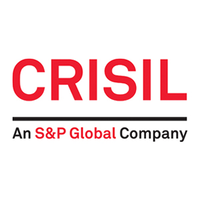Mumbai, NFAPost: CRISIL’s credit ratio (upgrades to downgrades) for the first half of the current fiscal printed at 0.54, the lowest in more than a decade, with 296 downgrades and 161 upgrades.
While this coincided with India’s sharpest gross domestic product (GDP) contraction on record, the credit ratio was cushioned to some extent by regulatory support.
Corporate credit profiles remain vulnerable even as demand claws back amid a raging Covid-19 pandemic. Interestingly, while the rate of upgrades plunged as expected with the pandemic crushing demand, the rate of downgrades did not surge as feared.
That’s because credit profiles were cushioned by proactive regulatory measures such as liquidity window made available through the corporate bond market1, moratorium on debt servicing permitted by the Reserve Bank of India (RBI), and temporary relaxation in default recognition norms of credit rating agencies allowed by the Securities and Exchange Board of India (SEBI) . Without these, CRISIL’s credit ratio would have slid even lower.
Sectoral resilience
Over the past six months, credit quality trends have clearly brought to the fore sectoral resilience in terms of demand,
balance sheet strength and liquidity. High-resilience sectors such as pharmaceuticals actually had a credit ratio of more than one in the first half of this fiscal, led by steady demand and robust balance sheets.
On the other hand, moderate- and least-resilient sectors saw downgrades far outnumbering upgrades, because of the discretionary nature of goods and services, and leveraged balance sheets for several of them.
CRISIL Ratings President Gurpreet Chhatwal said CRISIL expects credit quality pressure on India Inc to persist in the second half of this fiscal.
“There has been a near-doubling of ratings with a ‘negative’ outlook, and ‘on watch’ in the past 12 months. While the moratorium has provided near-term relief, demand recovery for moderate and least-resilient sectors will be protracted. Timely restructuring support from lenders will be crucial to credit quality,” said CRISIL Ratings President Gurpreet Chhatwal.
Financial sector
Sectors to watch closely in the least-resilient category include airlines, gems and jewellery, auto dealers, hotels, and real estate. Sectors exhibiting moderate resilience include thermal power generators, textiles, retail, and roads and construction.
The financial sector, too, will bear the brunt with growth in bank credit seen nosediving to multi-decade lows of 0-1%
and assets under management of non-banks contracting 1-3% this fiscal.
The one-time restructuring permitted by the RBI could help the asset quality of banks without which, non-performing
assets would have touched a two-decade high of 11.5% by the end of this fiscal. For non-banks, loan delinquencies could dart up 50-250 basis points (bps), depending on the segment of operation.
MSME segment
While collection efficiency has improved from lows of April 2020, the self-employed, MSME and wholesale segments remain under pressure because of vulnerability in borrower cash flows.
Consequently, collection efficiency, liquidity levels and capital-raising ability – especially of non-banks – will determine
near-term credit profiles in the financial sector.
CRISIL Ratings Somasekhar Vemuri Senior Director said as business activity inches up from the lows of April and May, CRISIL will keep monitoring the timing and extent of demand revival, support provided via debt restructuring, and further fiscal and monetary policy measures.
“Prudent working capital and liquidity management will also be critical to support the credit profiles of corporates,” said CRISIL Ratings Somasekhar Vemuri Senior Director.





